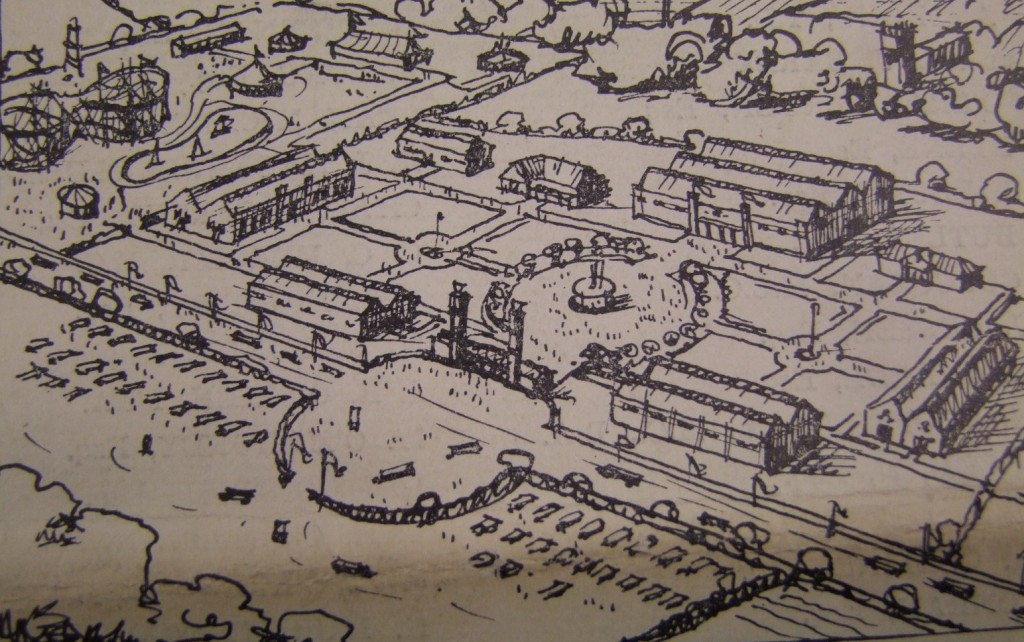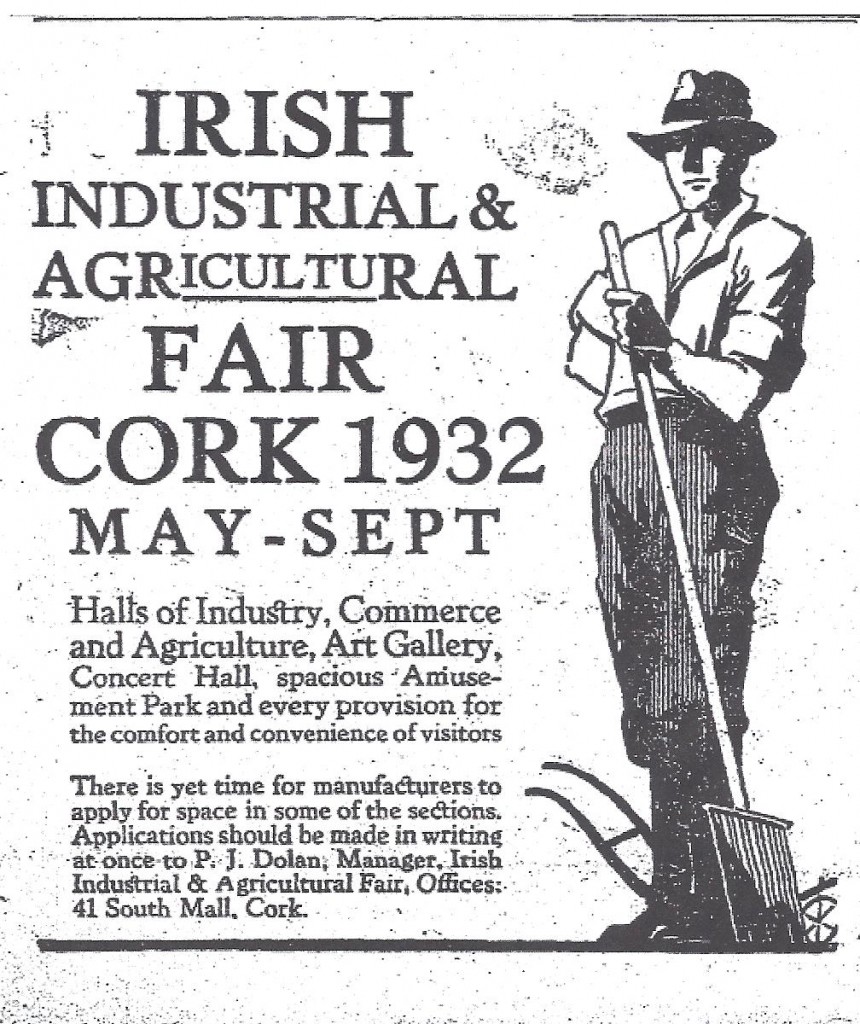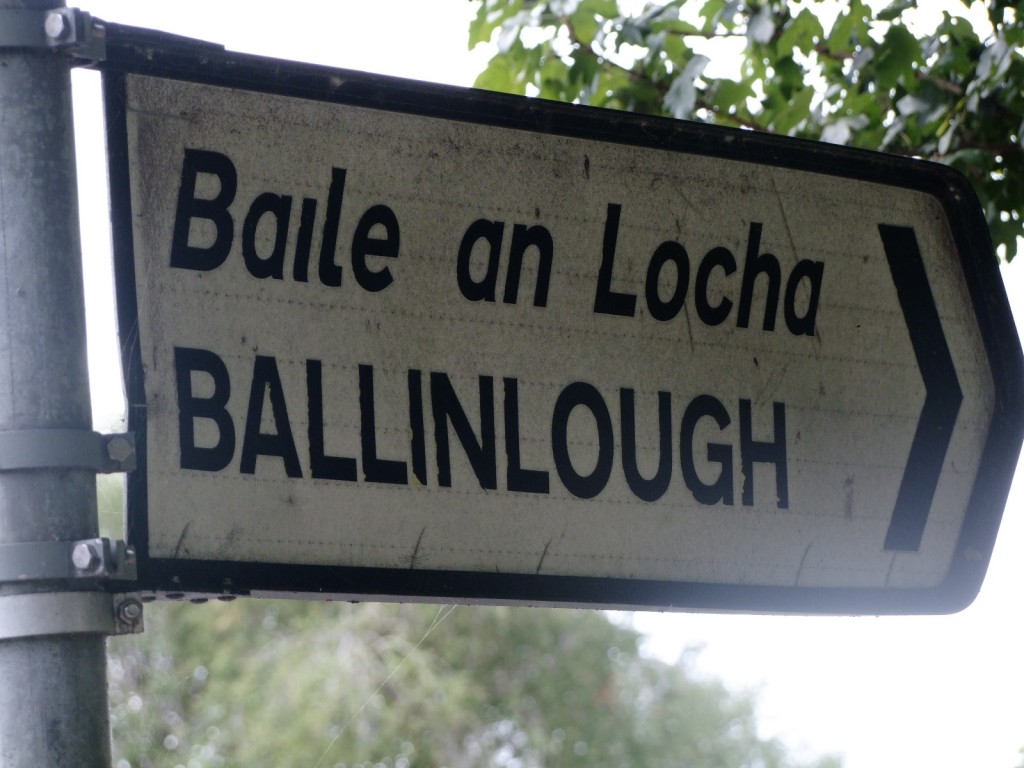
Kieran’s Article, Our City, Our Town,
Cork Independent, 4 November 2010
In the Footsteps of St. Finbarre (Part 235)
The Market Place of Ireland
“Unnecessary imports of food-stuffs and building materials into Cork, therefore account for an unduly large proportion of Cork’s incoming traffic- the imports of foreign flour alone totalling 22,500 tons for the year ended 31st July last. The only inference your council can draw from the returns of the imports is that Cork citizens are to a very large extent becoming gradually more and more dependent on the foreigners for food, clothing and shelter” (from annual report, Cork Chamber of Commerce, 1931, as published in the Irish Press, 1 December 1931, p.7).
In their address to the County of Cork Committee of Agriculture in mid August 1931, the members of the Irish Industrial and Agricultural Fair committee proposed to hold an exhibition or fair, which would accommodate exhibits and would illustrate native industry in Ireland. The fair committee noted that they were following the example of Denmark and Holland and believed the fair would be of great help in advertising the agricultural products of Ireland. They were also confident that the Department of Agriculture would enhance their efforts by putting up a building showcasing their own promotional efforts. The fair committee wanted the Department to show a farmhouse which would have a ten or twenty acre plot with out-offices and a suitable market garden. They also wished to have a small dairy on display to show cheese production. The fair committee noted that half the butter of Ireland was made by farmers themselves. The information the fair committee had was that much more cream could potentially be turned into cheese and sold. The committee maintained that the experiment was worth trying. It would cost a very small sum of money and if it succeeded it would have a far-reaching influence.
The fair committee were also of the opinion that horticulture should be very much advanced than it was. In 1931, there were £120,000 worth of tomatoes and only £200,000 worth of oranges imported into Ireland. Tomatoes, the committee asserted, could be produced better in Ireland because of climate, than in any other country in the world. The fair committee wanted the Department of Agriculture to co-operate with them in the matter of displaying forestry projects in Ireland. The Department had a forestry station near the city and as the fair committee intended running a road through the fair grounds they were anxious to have a plot in which each kind of native tree would be planted for display purposes. The fair committee praised the attempt to make the Munster Institute on Model Farm Road available to interested individuals who wish to gain in their farming enterprise by taking a personally conducted tour of the operation. The fair committee noted that such tours would be able to show the investment the Irish government had taken in encouraging the production of high quality eggs. The committee also hoped that University College Cork would display parts of its new creamery.
In a press statement on the 29 August 1931 in the Cork Examiner, further details on preparations for the Irish Industrial and Agricultural Fair 1932 were highlighted. Over eighty acres of land just off the Carrigrohane Straight were purchased from Mr. T.Corcoran, vice-chairman of the Cork County Council and the enclosing of the site and draining of the land began The plans of the main industrial hall were approved and tenders were to be invited. Cash and approved guarantees were accepted and these amounted to £15,300. The minimum amount of guarantees had already been exceeded by August 1931 such was the popularity of the proposed event. The lay-out of the grounds was provisionally arranged subject to definite information from the various National Government Departments as to what form which their co-operation was going to take. Approximately 18 acres were put aside for an amusement park and the “concessionaires”, as well as providing the usual plant and machinery, intended to spend £8,000 to £10,000 in material for buildings to be erected in the park.
The fair prospectus, which survives in the archives of the Boole Library, UCC, reveals that whereby the Chairman was George Crosbie, he was assisted by his vice chairman Senator J.C. Dowdall, James Dwyer and W.J. Hickey plus 54 members of committee from political and business backgrounds. The prospectus pitched Cork as “The Market Place of Ireland”. The objects of the fair were set out. The industrial objects were to “display and make known the manufactures and agricultural products of Ireland, and to foster and develop the growing importance of Ireland’s trade and commerce, at home and abroad”. The agricultural objects aimed to demonstrate the “marvellous progress that is being made in agriculture and agricultural methods, and to display the skill and energy of the Irish producer in this direction”. The educational objects aimed to “afford illustrations of the great advance in teaching methods, of the facilities of education, and of the careers open to those who take advantage of them, and of the influence of such educational training on Irish industries and agriculture”. The historical objects aimed “to record the general desire to preserve national memories and to stimulate interest amongst the Irish people for the history and literature of Ireland”.
To be continued…
Captions:
564a. Draft sketch of planned fair grounds (source: Cork County Library)
564b. Advertisement, Irish Industrial and Agricultural Fair, Cork 1932 (Source: Nenagh Guardian, 2 April 1932, p.2)




